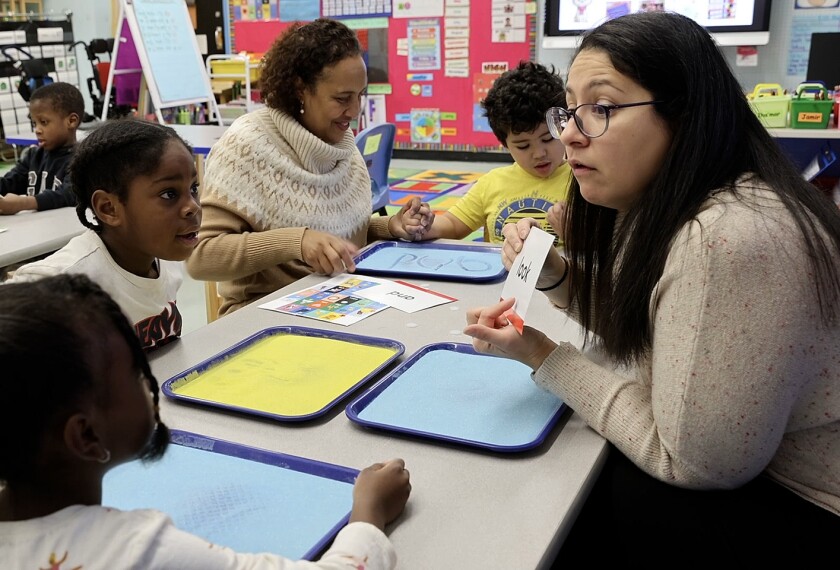It’s one of the most persistent issues in education: African-American children, statistically, are more likely to be designated as special education students than white students. Conversely, a much higher percentage of white students are classified as gifted.
“Minority Students in Special and Gifted Education,” is available from the National Academy Press.
A new report from the National Research Council suggests some ways to change that situation.
Educators, the report recommends, should be required to provide minority students with high-quality instruction as well as social support—in a regular classroom—before concluding that special education is needed.
Furthermore, schools should adopt early-screening strategies to identify students at risk of failure as early as possible, says the report, “Minority Students in Special and Gifted Education.” Otherwise, the authors warn, academic or behavioral problems can become almost irresolvable.
The report by the research council, chartered by Congress to provide independent scientific advice, also calls for states to stiffen training and professional-development requirements for all prospective and current teachers to help them meet the needs of atypical learners.
“Educators should not wait for at-risk children to fail, or conversely for potentially gifted students to demonstrate success, before taking decisive steps to encourage them within the regular classroom setting,” said Christopher T. Cross, the chairman of the committee that produced the report. Mr. Cross is a senior fellow with the Center on Education Policy in Washington and a former assistant secretary of education in the first Bush administration.
Numerical Disparities
The research council’s advice, requested by Congress two years ago, comes at the beginning of a year when lawmakers are preparing to reauthorize the Individuals with Disabilities Education Act, the federal law that guarantees students with disabilities the right to a free, appropriate education.
The report will likely help shape the law’s revision by Congress and the Bush administration.
In the first of what will be a series of IDEA hearings, members of Congress concentrated last fall on the issue of racial disparities in the identification of students for special education and for gifted and talented programs.
More than 14 percent of black students are in special education, compared with 13 percent of American Indians, 12 percent of whites, 11 percent of Hispanics, and 5 percent of Asian-Americans. The disparities are greater in the categories with the greatest stigmas, the report’s authors said.
About 2.6 percent of black students are identified as mentally retarded, compared with 1.2 percent among white students. About 1.5 percent of black students are labeled as emotionally disturbed, while 0.91 percent of whites carry that label.
Then there are numbers for gifted students. The NRC reports that, nationwide, 7.47 percent of all white students and 9.9 percent of Asian students are placed in gifted programs. Meanwhile, 3.04 percent of African-American students, 3.57 percent of Hispanic students, and 4.86 percent of American Indian students are classified as gifted.
A 1982 NRC report examined why high numbers of boys and minorities were placed in special education for mental retardation. Concern has only increased since, because minorities now make up about one-third of school-age children and the number of special education students has increased to more than 10 percent.
Other findings in the report:
- There needs to be rigorous research on ways to identify minority students who excel in verbal, math or other skills. Historically, disproportionately low numbers of African Americans, Hispanics and American Indians have been placed in gifted classes.
- States should make sure that teacher-licensing and -certification requirements call for training in effective intervention methods to assist students who fail to meet academic standards, or who exceed those standards. Teachers should familiarize themselves with student values and cultural practices that may affect classroom participation and success.
- Federal and state government officials should improve and expand early-childhood services related to health care, family support, and preschool education.




